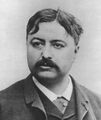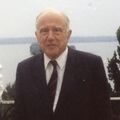Template:On This Day (nonfiction)/April 13
1771: Engineer and explorer Richard Trevithick born. Trevithick will be an early pioneer of steam-powered road and rail transport, developing the first high-pressure steam engine, and building the first full-scale working railway steam locomotive.
1889: Cryptologist and author Herbert Yardley born. Yardley will found and lead the Black Chamber, a secret American government cryptographic organization which will break Japanese diplomatic codes, furnishing American negotiators with significant information during the Washington Naval Conference of 1921-1922.
1905: Engineer Charles Renard commits suicide. Renard pioneer the design and construction of airships. He also proposed a set of preferred numbers now known as the Renard series.
1926: Aviator Charles Lindbergh opens service on the newly designated 278-mile (447 km) Contract Air Mail Route #2 (CAM-2) to provide service between St. Louis and Chicago (Maywood Field) with two intermediate stops in Springfield and Peoria, Illinois.
1927: Theoretical physicist Mendel Sachs born. Sachs' work will include the proposal of a unified field theory that brings together the weak force, strong force, electromagnetism, and gravity.
1939: Poet, playwright, translator, and lecturer Seamus Heaney born. Heany will receive the 1995 Nobel Prize in Literature.
1953: CIA director Allen Dulles authorizes the secret drug research program Project MKUltra, intended to identify and develop drugs and procedures to be used in interrogations and torture, in order to weaken the individual and force confessions through mind control.
2008: Theoretical physicist John Archibald Wheeler dies. Wheeler linked the term "black hole" to objects with gravitational collapse, and coined the terms "quantum foam", "neutron moderator", "wormhole" and "it from bit".







